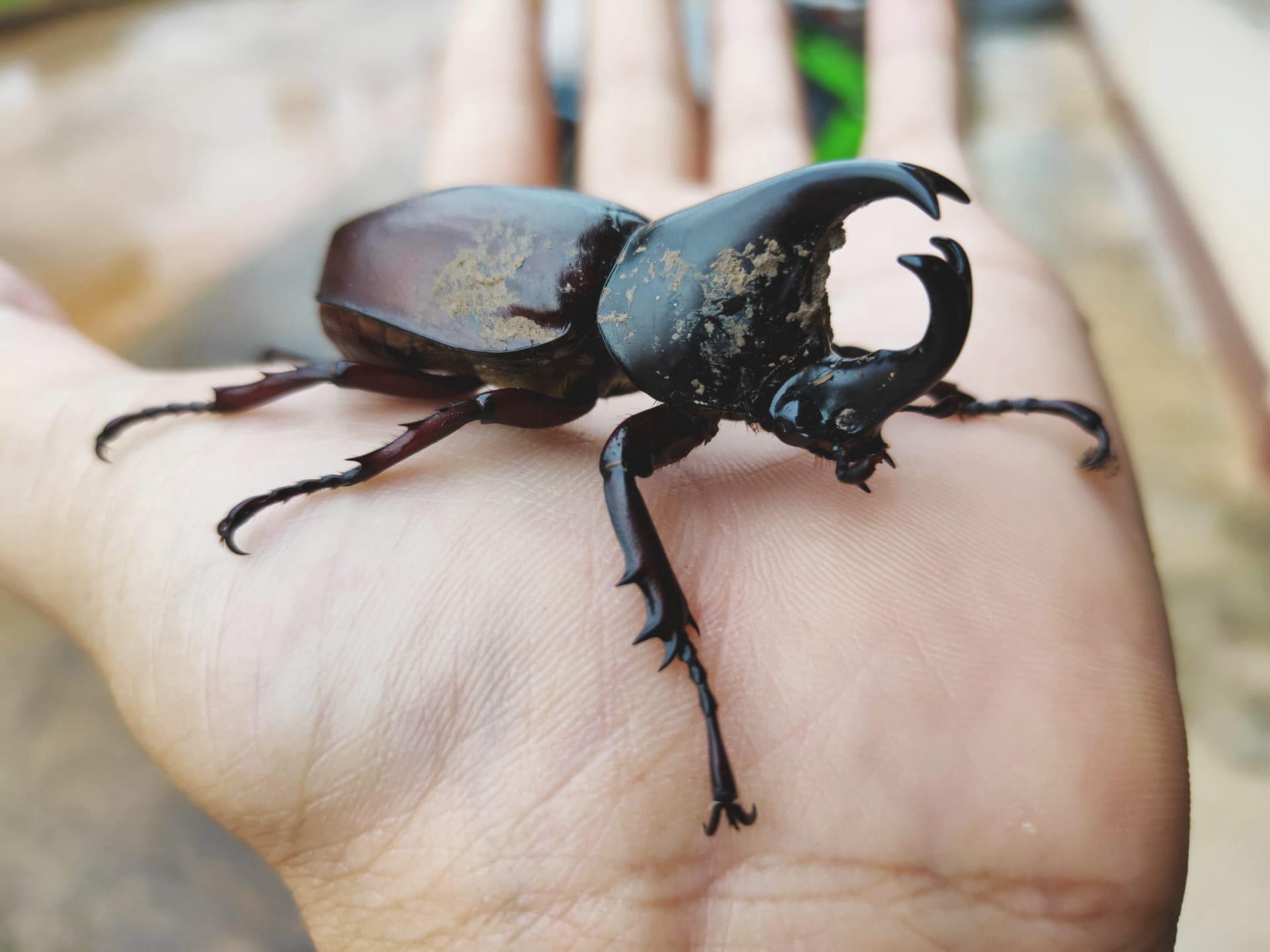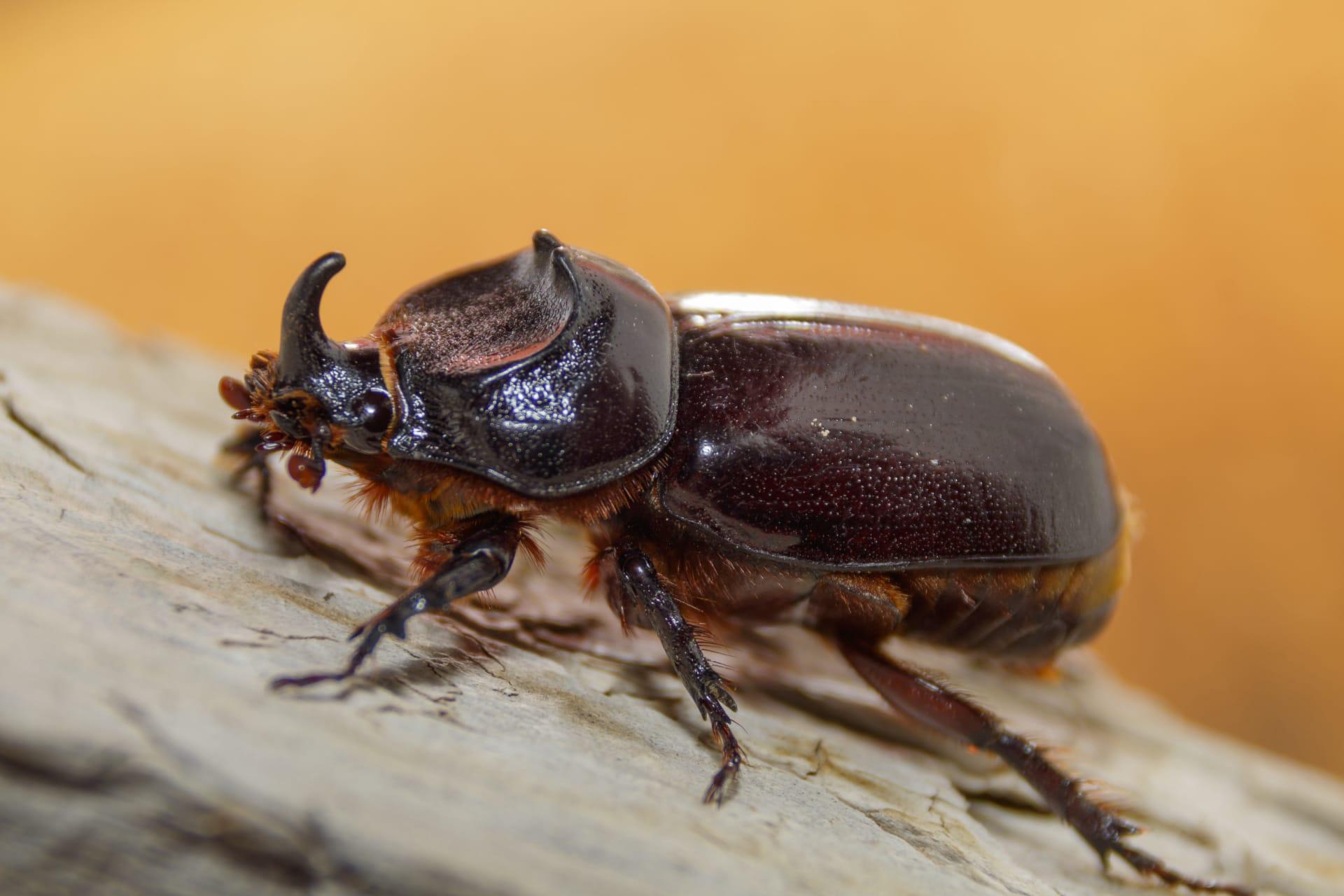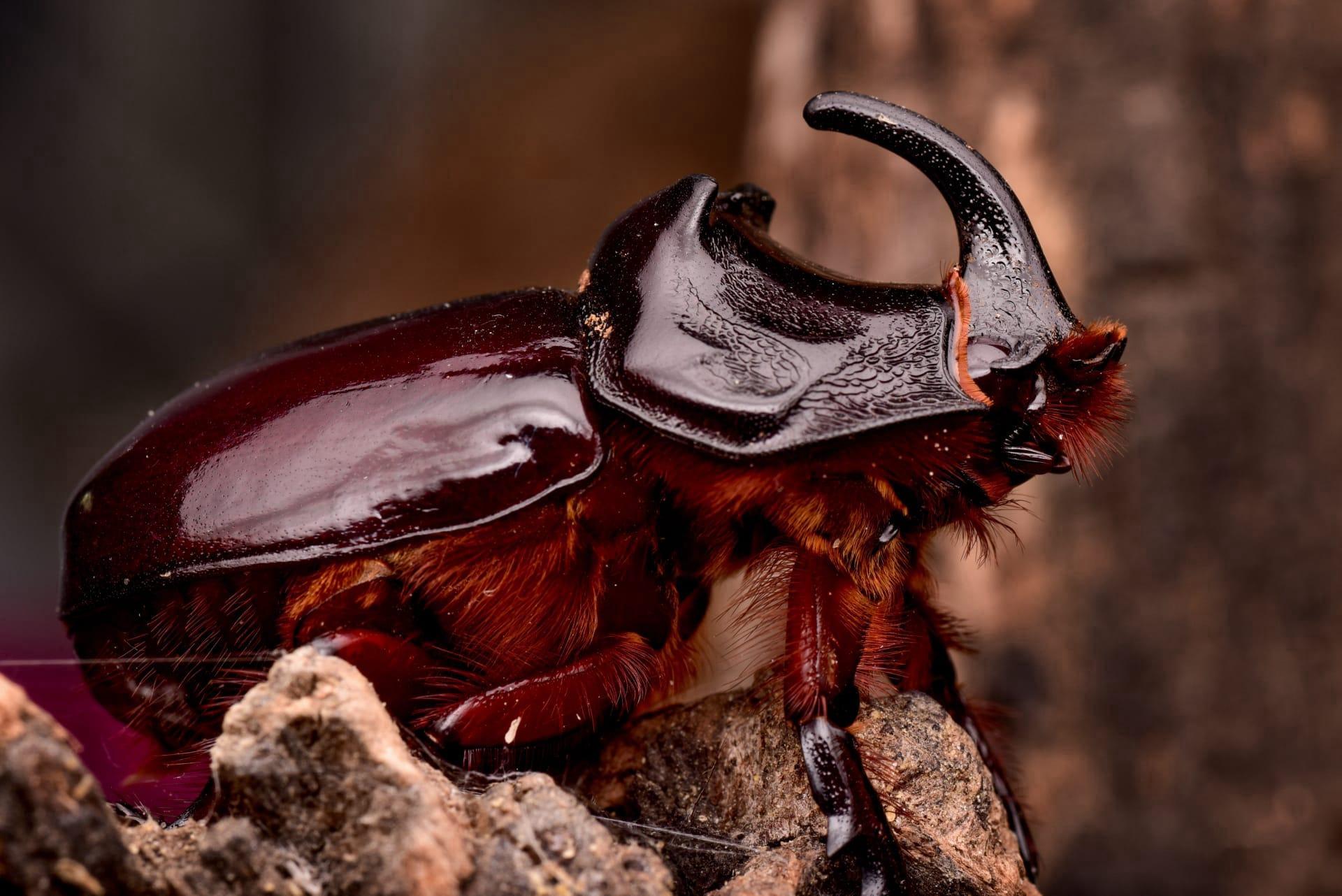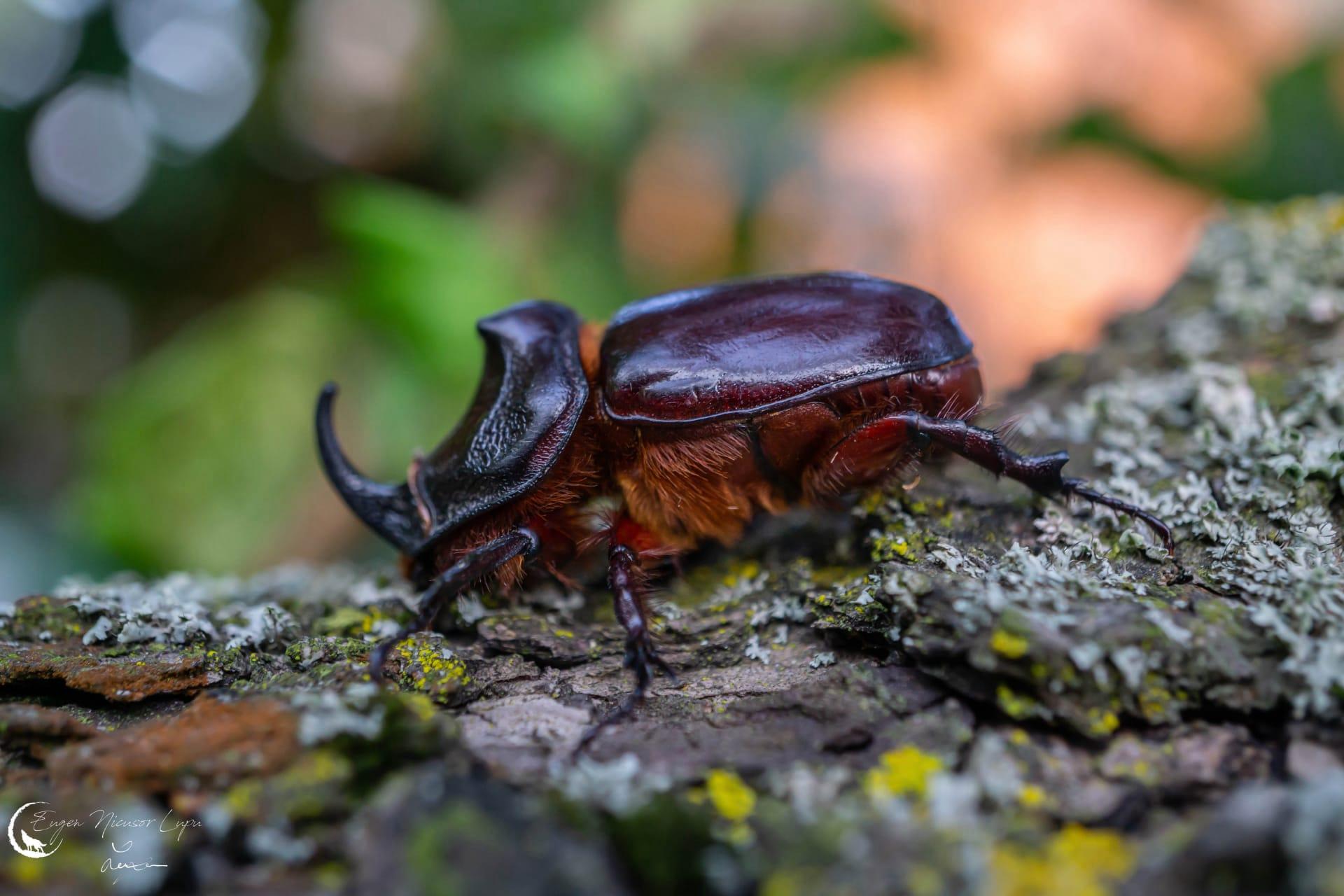1
Rhinoceros beetles, named for their iconic horns, are some of the strongest animals on the planet relative to their size. These tiny powerhouses can lift up to 850 times their own weight. To put that into perspective, it's like an average human hoisting about 65 tons, roughly the weight of six school buses! This incredible strength is thanks to their robust exoskeleton and muscular structure.
Another fascinating aspect of these beetles is their flying capability. Despite their bulky appearance, rhinoceros beetles are adept fliers. Their wings are neatly tucked under a protective cover known as an elytron. When they're ready to take off, they lift this cover and unfurl their wings. Their flight is not just a means of transportation but also a vital part of their mating rituals, as males often fly to seek out females during the breeding season.

2
Rhinoceros beetles are also known for their impressive longevity, especially compared to other insects. In the wild, they can live up to 2-3 years, which is quite extensive for an insect. This lifespan is partly due to their slow metabolism and the various stages they undergo, including a long larval phase that can last several months.
Their diet is another interesting aspect. Rhinoceros beetles primarily feed on decomposing plant matter, fruit, and sap. This diet helps in forest nutrient cycling, making them essential for ecological balance. Interestingly, they can also consume fermented fruit, which might contain alcohol, without any apparent ill effects, showcasing their unique metabolic capabilities.

3
Rhinoceros beetles have a unique way of communicating: through sound. They produce noises by rubbing their abdomen and wing covers together, a process known as stridulation. These sounds serve various purposes, including attracting mates and warding off rivals. Each species of rhinoceros beetle has its distinct sound, which helps in identifying and attracting the right partners.
Another intriguing fact is their role in various cultures. In some Asian countries, rhinoceros beetles are kept as pets and are even used in gambling fights where two males are pitted against each other. These beetles are also symbols of strength and resilience in many cultures and often appear in folklore and children's stories.

4
Rhinoceros beetles exhibit a fascinating behavior known as 'horn wrestling.' This is primarily observed in males, who use their horns in battles for territory or mates. They lock horns with their rivals and try to flip them over. The shape and size of their horns vary among species, and these variations play a significant role in their fighting tactics.
Their exoskeleton is not only strong but also quite colorful. While generally perceived as black or dark brown, rhinoceros beetles can exhibit a range of colors, including greens, reds, and yellows, often with a metallic sheen. This coloration is due to the microscopic structure of their exoskeleton, which reflects light in different ways, creating these vibrant appearances.

5
One of the lesser-known facts about rhinoceros beetles is their role in scientific research. Due to their unique strength and exoskeleton structure, they have become subjects of study in the field of biomimetics. Scientists are exploring how the beetle's design can inspire new, more efficient materials and structures in engineering and robotics.
Rhinoceros beetles have a significant ecological impact. As larvae, they help decompose dead wood and other plant material, enriching the soil. Adults, on the other hand, aid in pollination. While feeding on tree sap and nectar, they inadvertently transfer pollen from one flower to another, thus playing a crucial role in maintaining healthy ecosystems.